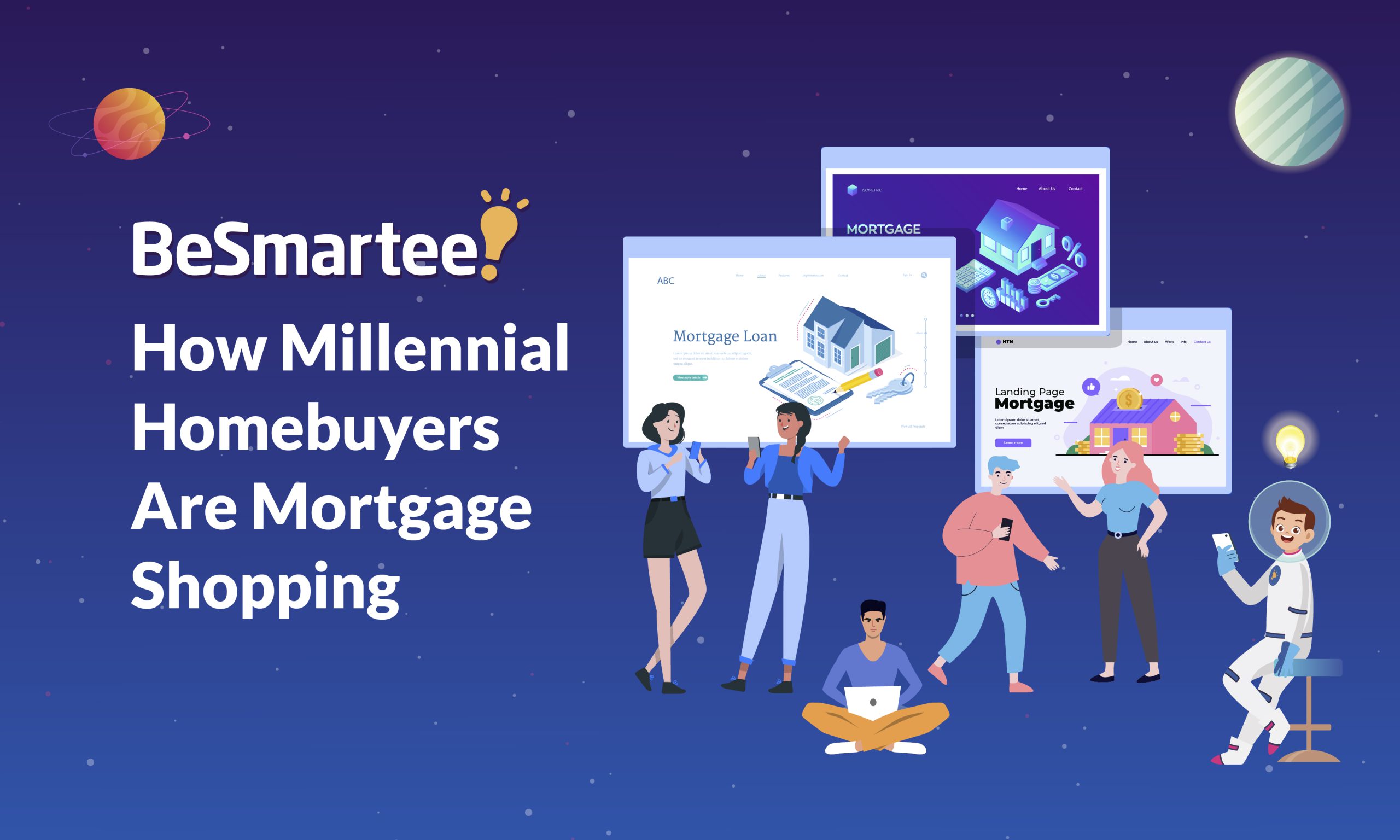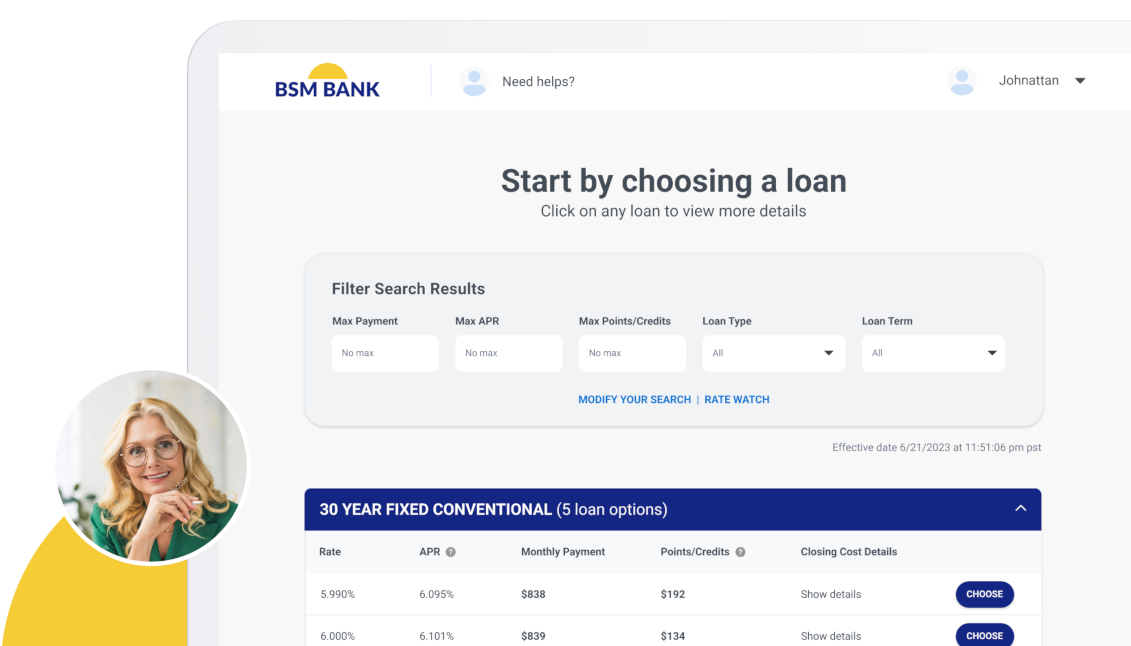As the biggest global adult generation, millennials are changing the way traditional business is done. Industries that built their brand around the demands of baby boomers have learned that a one-size-fits-all approach isn’t working with newer generations.
The U.S. mortgage industry hasn’t been immune to this shift. Millennials are taking over the mortgage market as millions reach prime home purchasing age each year. Lenders are quickly learning that this generation prefers a digital approach with high levels of personalization and communication.
Let’s look at how millennials are mortgage shopping and how this has changed the industry.
A Look at Today’s Homebuyers
Born between 1981 and 1998 and totaling 72.1 million individuals, U.S. millennials have passed baby boomers as the nation’s largest living adult generation. Although millennials are renting and living with their parents longer, this generation makes up a majority of today’s home buyer demographics at 38%, according to the NAR’s 2020 Home Buyers and Sellers Generational Trends Report.
“Millennials represent the single biggest opportunity in the housing market today,” said Ellie Mae Chief Operating Officer, Joe Tyrrell. “Millennials are emerging as a dominant force relative to driving the purchase market forward in the next few years,” as millions of millennials are reaching their prime home buying age each year.
Realtor.com reported that in April 2020, despite the COVID-19 pandemic, millennial home purchase loan originations rose to 53% from 49% the previous year. Data released from Ellie Mae also revealed that in Q2 2020, millennials closed more purchase loans than any other generation.
Today’s home buyers are also shopping for mortgages much differently than their parents or grandparents. Instead of visiting a local branch, millennials prefer to start their mortgage shopping online and compare between different lenders. This generation is also less loyal to their financial service and a Gallup retail banking survey found that millennials switched their primary bank 2.5 times more often than baby boomers.
Millennials are the world’s first digitally-inclined generation and newer generations are continuing to drive the preference for a digital-first customer experience.
Millennials Are Tech-Driven
Tech-savvy millennials grew up with computers and the internet. The vast majority own a smartphone and are active across multiple social media channels.
Compared to older generations, millennials are best at adapting to and mastering new technologies. With almost everything going digital, this hasn’t presented any barriers for this generation but has reinforced the need for instant gratification.
Almost anything is a quick Google search away. You can order groceries and you can even buy a car and have it delivered to your home. If technology has become such an integrated part of this generation’s daily habits, it’s no wonder why it’s an expectation that the home buying process be as seamless and digital as possible from start to close. The millennial generation doesn’t just prefer a digital mortgage or lending experience but expects it.
Digital devices have changed the way that millennials shop for mortgages. The NAR’s 2020 Home Buyer and Sellers Generational Trends Report also found that 78% of older millennials found their home through a mobile application.
Having a digital preference doesn’t stop at the initial search. The mortgage industry has been slow to jump on the digital trend but millennial preferences for digital applications and the current circumstances amidst COVID-19 are accelerating the transformation.
Millennials and the Digital Mortgage
The “anywhere, anytime” consumers of today demand speed and convenience which has caused exponential growth in the digital mortgage industry.
Fannie Mae reported 17,000 electronic promissory notes (eNotes) in October 2018 and one year later, these numbers increased by more than 500% to over 95,000. February 2020 experienced a record high with 19,240 eNotes registered. Fannie Mae also reported that 66% of borrowers are interested in a fully digital process and 95% of lenders are reliant on technology solution providers to deliver services in some form.
Why the sudden explosion in the demand for digital? Digital mortgages are faster, cheaper and more secure than traditional mortgage loans.
Digital mortgages are completed on a single platform. Loan applications and documents are filled, signed, stored, verified and sent electronically. Not only is this process cheaper for mortgage companies, but there’s less interruption in the process. There are no misplaced paper documents or time wasted spent on waiting for a verification from another department or third party.
Subscribe to BeSmartee 's Digital Mortgage Blog to receive:
- Mortgage Industry Insights
- Security & Compliance Updates
- Q&A's Featuring Mortgage & Technology Experts
“With every passing day, it becomes more apparent just how critical digital mortgage technology is to lenders right now,” said Joe Tyrrell, chief operating officer at Ellie Mae. “Capabilities like online applications, automatic updates and eClosing offer millennial customers the seamless digital experiences they expect while freeing up time for the human interaction necessary to answer questions or concerns they may have as they navigate the homebuying process for the first time.”
Digital is expected but millennials still want transparent communication and personalized service with their lenders.
Engagement Is Key
Digital is still the cost of entry and according to BAI’s Banking Outlook survey, half of millennials would switch to another financial provider if they learned that it offered a digital app that was superior to the one with their current provider. Millennials also used more financial apps than any other generation with an average of just under four per mobile device.
Most people think that millennials only want digital, and although it’s critical, it hasn’t been the case. Engagement is key to stay competitive.
A survey conducted in May 2019 by Deloitte with 140 respondents across 20 different countries took a closer look at how millennials perceive their own bank, the banking industry as a whole and what they expect from the in the future. The survey found that 35% of respondents expect regular communication with their bank and 83% expect these communications to be personalized.
Spamming doesn’t work. Each message needs a targeted approach personalized to the individual with honesty and transparency. The same applies to the mortgage process.
Digital mortgages give lenders more time to focus on their borrowers. Millennials want a helping hand throughout the mortgage process if or when it’s needed.
Considering that the NAR report found that 26% of borrowers between the ages of 22 and 29 said the mortgage process was somewhat more difficult than expected and 7% said it was much more difficult than expected, digital mortgage lenders have the opportunity to provide great customer service with multiple human touchpoints to help navigate borrowers through the loan origination process.
What’s the Response?
How exactly are financial service providers responding to millennial demands?
JP Chase Morgan was one of the first big names to step up to the plate with its $11 billion per year investment in new technology. The preferences of Chase’s 60 million retail customers helped push the company towards technological innovation.
What does new technology bring to the table? For the mortgage business, it means a seamless, automated process with a reduction in cycle time, improved loan quality, increased productivity, lower costs, consistent and defined workflows and an overall better customer experience. More loans are being processed and automation gives lenders the time necessary to connect with millennial borrowers through their preferred channels.
Mortgage companies are utilizing mortgage point-of-sale (POS) platforms, a customer-facing user interface that gives borrowers the tools they need to work with their loan officer, to cater to the desires of the millennial borrower. Customers can apply for a mortgage loan from their mobile device, upload important documents, track the status of their application and communicate with their loan officer during every step of the process.
Technology is allowing mortgage lenders to reach more borrowers than ever before while delivering the convenience of applying online with the ability to engage should a question or problem arise.
Roundup: Know Your Customer
The COVID-19 pandemic hasn’t slowed down millennial homebuyers and data has revealed that they aren’t afraid of a competitive market.
As more millennials enter the housing market, they’re approaching the mortgage process in different ways than older generations and technology plays a vital role. So what do millennials really want from their mortgage lender? A combination of technology, ease of use and personalized guidance. Millennials aren’t afraid to go to the competition if their needs aren’t met.
If you have any questions about digital mortgage software and giving your customers the best possible experience, don’t hesitate to contact us at (888) 276-1579 or email our mortgage technology experts at sales@besmartee.com.




